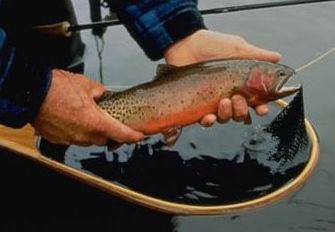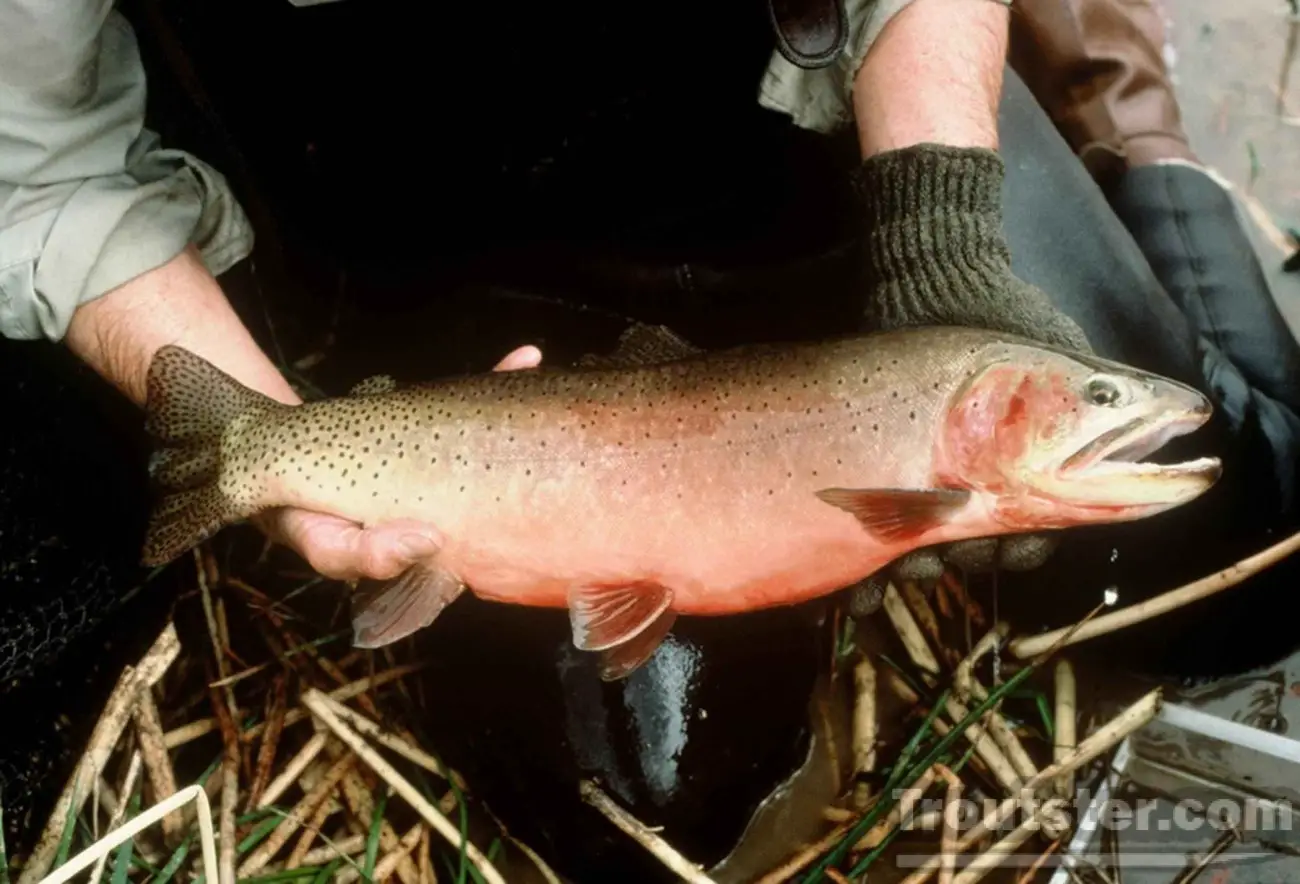This post was last updated on October 9th, 2014 at 04:26 pm

Scientists believe that the greenback cutthroat trout probably evolved in the Yellowstone and Green river basin over the course of 2 million years. Their natural ancestors, Oncorhynchus, would have migrated there from the Snake and Columbia River basins (the current home of the Yellowstone cutthroat trout variety).
Then, over the last 20,000 years, a sizeable population of them would have made it over the Continental Divide when the last Ice Age occurred. Eventually, those fish would have given rise to the current greenback cutthroat.
This would explain why you can only find Greenback Cutthroat Trout east of the Continental Divide. They enjoy the cold clear water found in the foothills and mountains of places like Arkansas and also in the South Platte Rivers. They have other waterways they call home, but those are continuously dwindling. By the late 19th century, it was still not uncommon to find them dotting waterways throughout North America where their habitat needs were met.
Unfortunately, that was the last time they would be found in such prevalence. When settlers moved west for mining purposes, they took plenty of trout with them. However, the bigger issue was that they actually mined in and around these important waterways. One of the byproducts of doing so included sediment in the water as well as other kinds of toxic runoff.
Another factor that helped bring the trout’s numbers down to dangerous levels includes agricultural operations in the area. When people started farming nearby, they used the trout’s waterways for irrigation purposes. Naturally, this had a negative impact on these fish’s numbers.
Finally, over time, non-native species have been introduced to a lot of Greenback Cutthroat Trout habitats. Examples of this include brown trout, brook trout and rainbow trout. The first two competed directly with them for resources, often leaving the Greenback Cutthroat Trout without any. But the rainbow trout actually bred with them, for the most part, creating a hybrid version.
The Comeback
 The Greenback is a native cutthroat to Much of central and northern Colorado. Specifically the drainages of the South Platte, it was thought to be extinct until recently. In 1969 a small population of the greenback cutthroat was found in an isolated creek in Roosevelt National Forest. They were originally found by some botanists doing some research in the area. They contacted a trout specialist at Colorado State University in Fort Collins, Robert J. Behnke. The Professor from CSU confirmed after some research, that these odd looking trout in the Como river were indeed the greenback cutthroat. They had not been seen by anyone for more than 30 years. This small stream is no more than 3 feet wide, nobody would think to look for trout in it. The New found Greenback cutthroat trout found in Como creek were the launchpad for the comeback of the species. These trout were used to repopulate many areas of the state of Colorado with their native Greenback’s. There were many genetically impure planted in Rocky Mountain National Park, and also in the surrounding National forests in the area. Over 60 new populations of the greenback cutthroat have emerged as a result of this find in 1969. However genetic research
The Greenback is a native cutthroat to Much of central and northern Colorado. Specifically the drainages of the South Platte, it was thought to be extinct until recently. In 1969 a small population of the greenback cutthroat was found in an isolated creek in Roosevelt National Forest. They were originally found by some botanists doing some research in the area. They contacted a trout specialist at Colorado State University in Fort Collins, Robert J. Behnke. The Professor from CSU confirmed after some research, that these odd looking trout in the Como river were indeed the greenback cutthroat. They had not been seen by anyone for more than 30 years. This small stream is no more than 3 feet wide, nobody would think to look for trout in it. The New found Greenback cutthroat trout found in Como creek were the launchpad for the comeback of the species. These trout were used to repopulate many areas of the state of Colorado with their native Greenback’s. There were many genetically impure planted in Rocky Mountain National Park, and also in the surrounding National forests in the area. Over 60 new populations of the greenback cutthroat have emerged as a result of this find in 1969. However genetic research![]() published in 2012 has revealed that the true greenback cutthroat trout remains only in one stream, which is outside their native range.
published in 2012 has revealed that the true greenback cutthroat trout remains only in one stream, which is outside their native range.
Bear Creek Greenback Population
This population in Bear creek in Colorado, near Colorado springs was likely a true example of extreme luck. As mentioned in the video below, there was a resident near the area who possible transplanted the greenback from a nearby river into his small creek. He was planning to open an Inn, and wanted a trout population to fish for. Had this not occurred, there might be no examples anywhere of the true, genetically pure greenback. “The research findings will trigger a revaluation of the greenback recovery program by the Fish and Wildlife Service and the Recovery Team, which have been overseeing the recovery of the fish since it was placed on the endangered species list in 1973.”
Back in 2012, the University of Colorado Boulder did a study of Greenback Cutthroat Trout. The DNA tests they did of fish considered Greenback Cutthroat Trout actually found out that the vast majority of them were not. Most were actually Westslope, Colorado River and Rio Grande species. In fact, the only kind they could locate were living in a four mile span of a tributary of the Arkansas River called Bear Creek.
While the future of the Greenback Cutthroat Trout is certainly in question, efforts by hatcheries suggest it may pull through. Plus, if the last 100 years can tell us anything it’s that this fish is extremely hearty.
Identification and Current Status
The Greenback Cutthroat now only inhabits about 1% of its original range. It is the Eastern most cutthroat trout species in the US. The Greenback is Identifiable by its large spots compared to many other cutthroats. It also has pink hues mixed with sides of bronze gold or silver. The Back of the Greenback cutthroat trout is not particularly green however, no more than any other cutthroat species. The belly can become rather orange and vivid during spawning season, as can the sides of the fish.
A video about Bear Creek, the Only surviving True Greenback Cutthroat Population
Resources:
http://www.smithsonianmag.com/science-nature/trout_main.html
